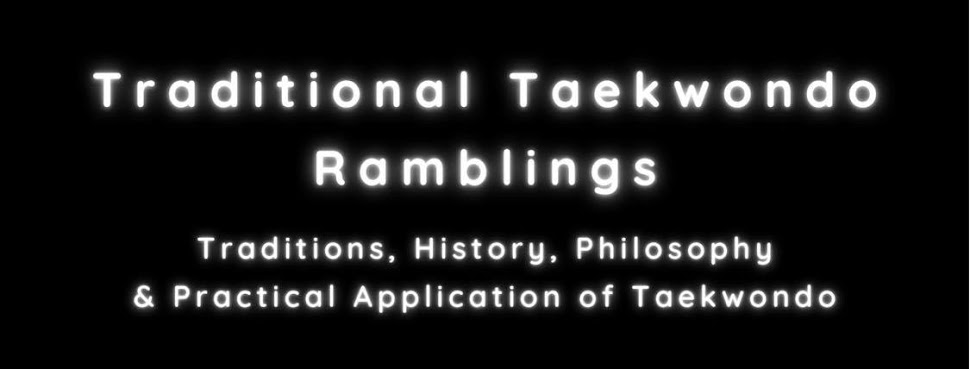First off I do not wish to repeat myself to much as I have allready written a lot about mainstream Poomsae training, its definition, history benifits, myths etc that can be read here (read more) and here (read more).
Lets just briefly go over a few parts that are essentual to have in a rant like this though. First of a definition on Poomsae the way it is most often viewed. I took the liberty to go to google and type in "what is poomsae". This is what Google came up with:
- Poomsae is a combination of basic actions and movements exercised with an imaginary opponent
- Poomsae is the Korean equivalent of Kata in Japanese karate.
- Poomsae are practised to improve Taekwondo techniques
- Poomsae (patterns) are a pre-arranged set of movements gradually becoming more complex the more you learn.
- Poomsae is a series of movements with both offensive and defensive techniques, which can be practised and trained even without the presence of an instructor.
 |
| Performing Poomsae Sipjin |
The training of Poomsae in main stream Dojang is all about performance. You practise poomsae to get to the next belt, for demonstrations, or for competitions. In a forms based martial art the forms would contain applications to show you principles that you could use in combat. Lets look at Taegeuk il Jang first two moves: Turn 90 degrees to the left and perform an arae makki (low block) in ap seogi (short front stance) then step forward with right foot to ap seogi (short front stance) and perform a momtong jirruegi (middle section punch). Two simple techniques, that in the view of the common Taekwondo student are done like this to drill basics. But look at them. Why on earth do we turn and why to the left? Why excactly these two techniques? Why is the hand on your hip on both techniques? Why this stance as opposed to another stance? The questions are endless. In a formsbased martial art all the questions above would be clear. There would be maybe two appliactions for the move (one basic and one advanced) or just the one definitive one. This application would show some important principles that could be used very different contexts during combat.
Lets say that the opponent throws a soccer kick to your groin (this way we can still use the good old low blocks are defenses for kicks explanation:-p ). You turn 90 degrees to get out of the way of the attact and use one hand to smother and controll one of the oponents hands dragging him out of balance while striking his kidney or liver with a hammer hist. You then preceed with grabbing him with the hand you used to hammer fist him and drag him onto you punch also delivered to a weak spot. Ok you learned a good defense against the soccer kick. But did you really only learn that? There are several principles we can use in any number of circumstanses for the first two moves:
- Get out of the way of the attack! (good one)
- Always try to control you oponent soo he can not attack you.
- When possible take away his balance
- Always aim for weak spots (but dont count on them, always have a back up plan)
- Never rely on taking him out with only one attack, always have a follow up.
- etc.
Taekwondo is a wonderfull martial art as it gives its practisioners the choice to either be technique based (use the poomsae to drill its fundemental movements) or formsbased (to use the forms a a "zip-file" to record the practisioners self defense strategy/strategies). There are very few martial arts so diverse as Taekwondo in this matter. Not only do the students have a choice in this but you also get so many forms to choose from. In Kukkiwon we now have 17 official Poomsae (Taegeuk 1-8 and 9 black belt forms) as well as 8 Palgwae forms that are considered supplemental forms by many. Choose wisely and study dilligently, or simply memorise the sequences and drill those basics as never before!
In the old Kwan they relied on the most "effective" (often simple) techniques to be used in self defense and sparring. The forms were pracitsed mostly to drill the basics in large groups. I do believe the founders intended Taekwondo to be a more formsbased martial art than it is currently practised but thats for another post:-)





This is really a nice and informative, containing all information and also has a great impact on the new technology. Thanks for sharing it
ReplyDeletefighting